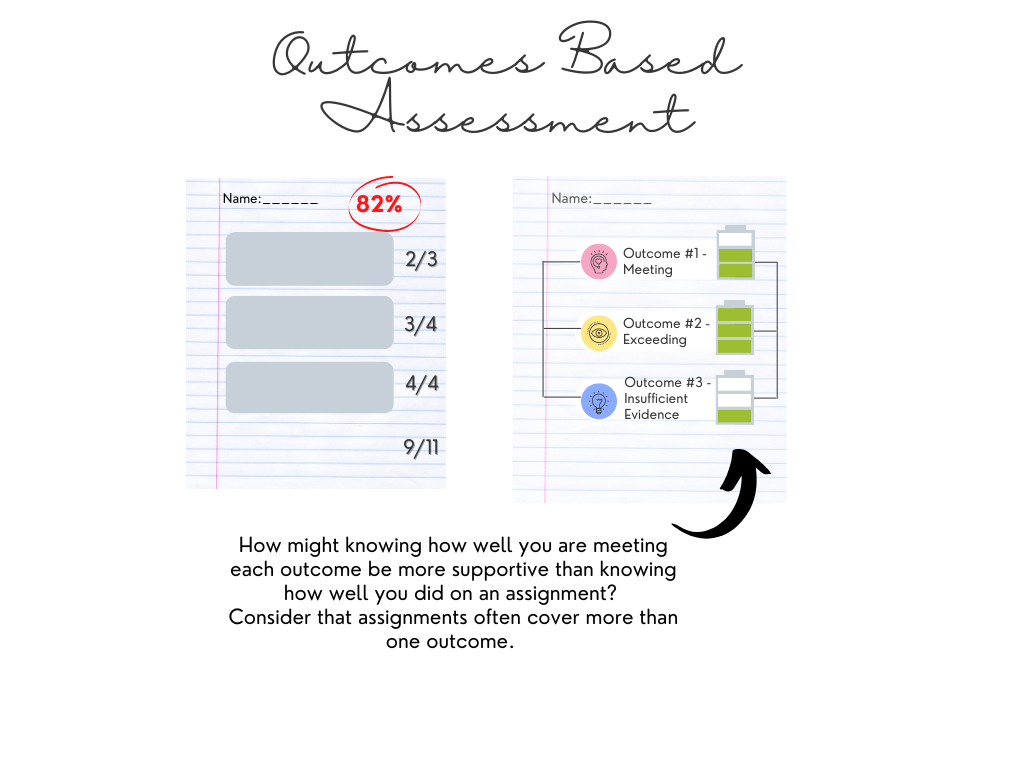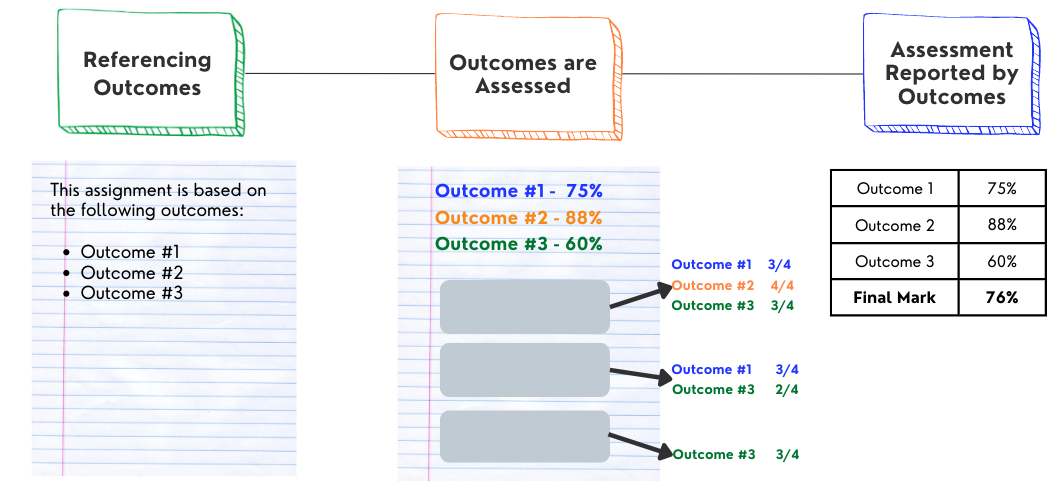Grades: Something to Lose, Something to Gain
By Carolyn Hoessler
At the start of each course, the syllabus outlines the assessments on which students’ marks will be based. Through this document, a rubric given with the assignment, or after receiving the marked up pages, students learn how we have chosen to grade. Specifically, they have learned if we are focused on loss or gain.
We can frame grades as starting from nothing with everything to gain through phrases such as “Everyone starts with 0, work hard and you will earn marks on each assignment”. Whether a student’s goal is 50 or 90, they all start with zero and have nothing to lose. Assignments are marked by adding points for each correct answer with the goal of climbing as high us as you can.
 Alternatively, we suggest that everyone can achieve 100% if they just work hard enough, or perhaps more accurately if they are perfect. “Everyone starts with 100%, each error on an assignment costs you one mark.” A 90% grade means a student has just lost less than a student with 50%.” Assignments are marked by deducting points for each error with the goal not to fall to the bottom.
Alternatively, we suggest that everyone can achieve 100% if they just work hard enough, or perhaps more accurately if they are perfect. “Everyone starts with 100%, each error on an assignment costs you one mark.” A 90% grade means a student has just lost less than a student with 50%.” Assignments are marked by deducting points for each error with the goal not to fall to the bottom.
Such promotion- or prevention-focused messaging is known to influence people’s motivations and behavior based on research framed by Crowe and Higgin’s (1997) regulatory focus theory. Friedman and Förster (2001) found that messaging for potential gains led to greater creative generation and insight. Looking at health, researchers have found promotion-focused messaging to increase healthy behaviours, while prevention focus leads to more detection testing (see review by Rothman, Bartels, Wlaschin, & Salovey, 2006). However, framing is also internal to the individual with a person’s personal experience shaping how they interpret their goal (as noted in the review).
So assuming that students are not preselected and there is a delightful mix of prevention and promotion tendencies in your class, what happens if students are motivated by gain but “everyone starts with 100” and just has to not fall, or motivated by loss but “everyone starts with 0” and strives to climb higher? The research suggests that, with all other factors being equal, students with a tendency in the mismatched direction would be less motivated, have less intention to perform the task, and perform worse.
What if students all started with an average value, such as 75, and to achieve a higher grade requires earning additional marks through exceptional work and to maintain a good mark and any previous gains involves avoiding marks through errors? Marking assignments would involve setting a “good” starting point with marks added and deducted accordingly across all sections of the assignment, rather than just parts such as gaining marks for essay arguments and losing them for spelling errors. With every class, the question for instructors remains how will you motivate your students?
Or perhaps just base their marks on stated criterion such as through a rubric.
Crowe, E., & Higgins, T. (1997). Regulatory focus and strategic inclinations: Promotion and Prevention in decision-making. Organizational behavior and human decision processes, 69, 117 – 132. Available at http://www.columbia.edu/cu/psychology/higgins/papers/crowehiggins1997.pdf
Friedman, R. S., & Förster, J. (2001). The effects of promotion and prevention cues on creativity. Journal of Personality and Social Psychology, 81, 1001- 1013. Available at http://www.socolab.de/content/files/Jens%20pubs/friedman_foerster2001.pdf
Rothman, A.J., Bartels, R.D., Wlaschin, J., & Salovey, P. (2006). The strategic use of gain- and loss-framed messages to promote healthy behavior: How theory can inform practice. Journal of Communication, 56, S203-S220. doi:10.1111/j.1460-2466.2006.00290.x


